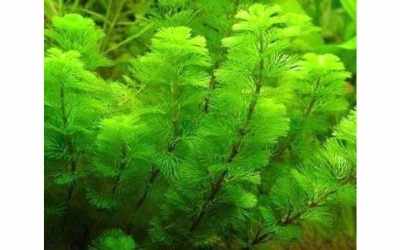Cabomba caroliniana is a very popular aquarium plant due to its attractive flowers and finely dissected leaves. It is highly adjustable submersed freshwater perennial plant which is widespread used and traded in the aquatic industry as an attractive aquarium plants. It is rooted plant with short, fragile rhizomes but sometimes it is found as floating plant. Cabomba caroliniana has many synomyms such as Cabomba aquatica DC., 1821; Cabomba pulchurrima (R. M. Harper) Fassett, 1993; Cabomba australis Speg., 1997; Cabomba caroliniana var. pulcherrima R. M. Harper, 1993. It (Cabomba caroliniana) was first described by American Botanist Asa Gray in 1837.
Systematic Position
Distribution and Habitat
In nature, it is distributed in Paraguay, southern Brazil, Uruguay; Northeastern Argentina of Southeastern South America. It is also found in the West and East Coasts of the United States. It is a rooted plant which prefers to grow in the mud of stagnant or slow-flowing water, such as lakes, ponds, streams, smaller rivers, marshes, and ditches. Generally, it grows in water within 0.4-1.2 m depth ranges but sometimes it also grows up to 6 m deep region.

Common Names
Cabomba caroliniana has several common names such as Carolina fanwort, purple Cabomba, Carolina water shield, gray fanwort, green Cabomba, Cabomba, fanwort, fish grass, green grass, Washington grass, Washington plant, water shield grass etc.
Overview
The plants have short; fragile rhizomes with grass-green to olive-green or reddish erect shoots. The shoot has submerged and floating leaves. Leaves of the submerged condition arrange in pairs on the stem oppositely while floating leaves are linear and inconspicuous that are arranged an alternative way. The floating leaves are 13 mm long and 6.4 mm width. This plant produces white to purplish or yellow flowers which are 6 to 15 mm in diameter. These flowers arise from the tips of the stems. In nature, pollination of the flowers is done by small, nectar-seeking flies.
Quick Cabomba Facts
Housing and Care Facts
It is a widespread beautiful aquarium plant among the aquarium lovers due to its attractive greenish coloration and hardiness. It grows rapidly in aquarium condition and can adapt well to different conditions. It provides the safe haven for fish fry due to its thickets leaves. It is also used as a substrate for the spawning of many fish in the aquarium.
See Also: Best Aquarium Air Pumps 2018 – Buyer’s Guide & Reviews
This plant can grow in any size of aquarium uniformly throughout the year. In aquarium condition, it is better to place in the background position, where it forms a magnificent openwork shade for your aquarium fish. This plant is relatively undemanding. It loves pure water and it should be kept at a water temperature of 65 – 76 ° F, pH of 5.5 – 6.8 and hardness of 4-8 dGH. But in more hard water, it grows more slowly, and its leaves become smaller. It should not be kept in muddy water, where it collects particles of turbidity and loses attraction and old leaves quickly die. In this case, you should remove sediments in a timely manner. The water in the aquarium should be changed regularly 3-4 times a month.
For optimum growth, lighting should be strong enough. With a lack of light, the plant begins to stretch; its color becomes faded and acquires a yellowish tinge. For proper growth, natural and artificial light is suitable. In this case, the approximate power of fluorescent lamps should be 0.4-0.5 watt per liter of water and the duration of the day is not less than 12 hours.
The aquarium soil must be nutritious and it is better to use sand and fine pebbles as a substrate in the bottom of the tank. For growing your plant, it does not need mineral feeding because it gets quite enough nutrients from the food for fish and fresh water.
Propagation / Reproduction of Cabomba caroliniana
In the aquarium, it is very easily propagated by cuttings of the stem or rhizomes. For propagation with rhizome, whole or a piece of the rhizome should be placed in a new place in your aquarium. After few days it produces new plants.
But for propagation with stem, the stem should be cut into parts using sharp scissors or blade. In this case, each part should have 5-6 whorls of leaves which produce new plants but this process is slow. The lower parts of the stem with roots, as well as the apical stem, begin to grow somewhat faster than the intermediate cuttings. Sometimes it also does sexual reproduction through seed formation.
Concluding Remarks
Overall, Cabomba is a very attractive plant among the aquarium enthusiasts due to its gorgeous and greenish leaf coloration. It is now grown in commercially in many countries of Asia due to export purposes. This plant provides safe shelter and creates spawning sites for many aquarium fish. It grows in aquarium condition throughout the year. We recommend you to keep this plant in the background position, where it forms a magnificent openwork shade for your aquarium fish.
